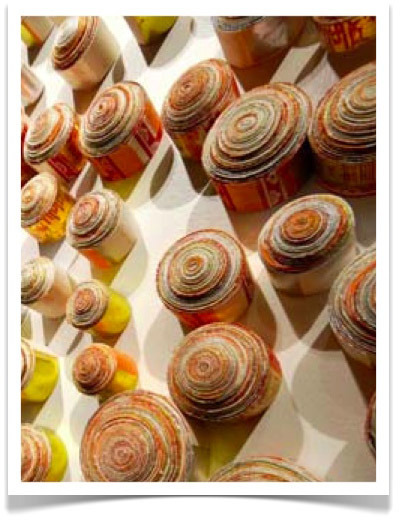Spirit Money
 Sunday, January 31, 2010 at 2:51PM
Sunday, January 31, 2010 at 2:51PM 
In Chinese ancestor worship, spirit money, or joss paper, is burned as an offering to ensure that the deceased is well taken care of in the afterworld. The image above is from a wall installation by Beili Liu currently on display at the Castle Gallery of The College of New Rochelle. The work is made from hundreds of rolls of spirit money, half of them silver and gold, the other half blackened by burning. A beautiful and compelling piece of art. [NOTE: Origin: Chinese spirit money, 7.5 ft x 7.5 ft x 3 in, © Beili Liu 2008; from Mapping Memories, installation art by Takafumi Ide and Beili Liu, Castle Gallery, CNR, December 8, 2009 - February 21, 2010].











